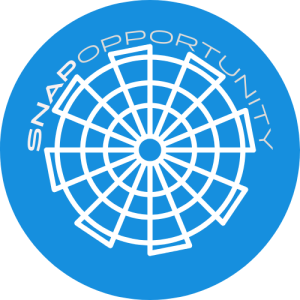Five ways to keep up with the AI revolution – TechRadar
I’ve been working with the technologies associated with conversational AI for two decades. The wide adoption moment that the release of ChatGPT ushered in was something I’d been waiting for (and something I predicted in my book, Age of Invisible Machines). People like having conversations with technology using natural language. Still, the extent to which generative AI has altered the broader AI marketplace has been surprising.
We now live in a world where most of the people you walk past on the street have had sophisticated conversations with machines by prompting any of the widely available large language models (LLMs) like ChatGPT. This puts businesses in a tricky position. Users are accustomed to posing all kinds of conversational requests to systems that aren’t even remotely up to the challenge of doing real work. Amid all the noise and distractions, it’s important to focus on what really matters in this already fraught journey. Here are five key things to keep in mind as you create a technology ecosystem that’s ready for conversational AI.
Be willing to fail
The easiest way to get started with conversational AI is often to automate internally. Start small by designing automations for individual tasks and skills, not entire jobs. The simpler you make your starting point, the sooner you can test and iterate. Testing and iterating is all about embracing failure. With conversational AI, the goal should be to prop up an experience and knock it over, so you can prop something better up, knock it over, and repeat. You’ll fumble often as you grow legs, but that’s part of the process, too. Starting with internal facing use cases provides the opportunity to learn to walk before you run for customers.
In the realm of conversational AI, we’re more agile than Agile. With the right tools and budding technology ecosystem, the iteration process becomes so speedy that failures are often quick rewards that point to better solutions. Because fixes and new solutions can be tested and deployed quickly and at will, your organization can build on wins and gain speed. By rolling out internal successes with automation and continually improving on them, you’re both demonstrating to everyone in your organization the process by which advanced automation will take place and introducing them to the ecosystem they will eventually call home.
Accept that ROI will come more slowly
I often find the $1,000 light switch paradox helpful when explaining the road to viability with conversational AI. To the outside world, a quest to outfit your house with a voice-controlled light switch might seem ludicrous. Say you need to spend about $500 for a voice-activated smart speaker, $200 for light bulbs you can connect to wirelessly, and $300 for a smartphone to turn them on and off. Why drop a grand to automate a functionality that already works well and requires little effort? What outsiders aren’t seeing is that you’re laying the foundation for a house full of voice-activated automations.
That’s how this journey works. You must be willing to look a little foolish at first. You’ll need to make a significant investment and then resign yourself to the fact that moving an organization forward with conversational AI involves a lot of baby steps and falling on your face. You need to start small, but small is underwhelming. So far, too many organizations look for a use case that isn’t underwhelming and set themselves up for failure—jumping into complex use cases and slapping together machines that are bound to suffer low adoption rates and end up being scrapped.
Put employees ahead of customers and shareholders
This might be the most radical shift for many organizations. So often we see scenarios where employees come last, with customers or stakeholders given top priority, depending on the organization. The problem with putting shareholder needs first is that you are unlikely to be able to move quickly with a willingness to fail and a commitment to an investment strategy that won’t yield immediate gains. Putting customers first can lead to poor employee experiences, which can lead to talent drain, which can lead to unhappy shareholders. Putting employees first can have multiple benefits. The people within an organization will have the most intimate knowledge of the tasks that can be automated and best ways to go about automating them. I already explained the wisdom behind starting your automation journey internally from a design standpoint, but there’s also the benefit of making the experience of work better for employees.
According to a Harvard Business Journal article from 2019, there’s a statistical connection between employee well-being and customer satisfaction: “A happier workforce is clearly associated with companies’ ability to deliver better customer satisfaction—particularly in industries with the closest contact between workers and customers, including retail, tourism, restaurants, health care, and financial services.” I’ve found that, most often, the road to game-changing automated customer experiences runs right through game-changing automated employee experiences. Companies need to invest in the tools, but they need to invest even more heavily in finding the right people to put them to use.
Don’t chain yourself to one vendor
The conversational AI marketplace is a crowded and noisy place. There are tools and toolkits, which are dominated by tech giants like Microsoft, AWS, and Google. Newer companies like Huggingface, OpenAI, and Anthropic are releasing functional solutions as well. Individual providers might provide a diverse array of tools, APIs, and resources that empower businesses to integrate, craft, and deploy conversational AI applications. While these components offer flexibility, integrating them into the kind of cohesive experiences that will push business forward is extremely difficult.
Then there are point solutions, which come in two flavors: pre-built AI bolt-ons added somewhat strategically to existing software platforms like ServiceNow, Workday, MS Office, and Salesforce; standalone point solutions like Kore.ai, Cognigy, and OpenAI’s GPT are distinct AI applications tailored for specific tasks. While bolt-ons offer ease of procurement and installation, they exhibit fragility and limitations in terms of channel support and functionality scope, as they are often confined to the software they augment. Standalone point solutions typically address use cases that are pervasive across entire markets or industries. As such, they tend to be inflexible, adhering to rigid structures, which can be fatal when trying to reach a state of hyperautomation.
Flexibility and openness are key to a successful journey, and Extensible Cognitive Architecture provides the answer. Whether you buy it or build it, this architecture consists of multiple interconnected software components and databases. This enables the creation of seamless conversational experiences that combine language understanding, context awareness, and the ability to generate micro-UIs as needed. Organizations that are fully leveraging conversational AI are automating a wide range of tasks (or skills, as I like to think of them) coordinated across different software systems, channels, and departments. These skills are integrating with various business systems, and scaling to meet evolving business needs. This requires a level of openness and flexibility that bolt-ons and point solutions will never be able to provide.
Have a shared (bold) strategy
Building a coordinated ecosystem that allows an organization to maximize the potential of conversational AI is a complex and sophisticated undertaking. While the integration and implementation of these technologies is likely a newer concept to stakeholders, many of the design principles, approaches to problem-solving, and processes are familiar. The biggest challenge you’re likely to face is getting the decision makers to accept the fact that this requires involvement from—and potentially the restructuring of—every department inside your organization.
It behooves business leaders to encourage employees to find opportunities to automate the tedious processes they understand best. It makes the work of automation less daunting if everyone involved is working in an environment where the expectation is to fail forward. This only works with an open and flexible orchestration platform that lets their team members design automations of the tasks they understand best. In that sense, a shared internal vision for how this technology can be applied, will lead to people liking their jobs more, customers enjoying more personalized experiences, and, eventually, shareholders seeing a sizable return on investment.
We’ve featured the best AI Chatbot for business.
This article was produced as part of TechRadarPro’s Expert Insights channel where we feature the best and brightest minds in the technology industry today. The views expressed here are those of the author and are not necessarily those of TechRadarPro or Future plc. If you are interested in contributing find out more here: https://www.techradar.com/news/submit-your-story-to-techradar-pro













